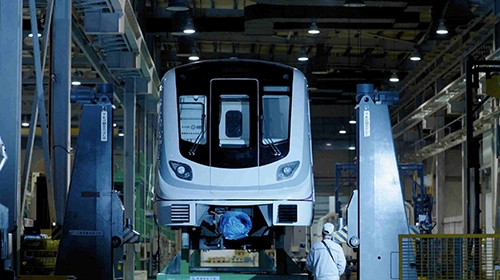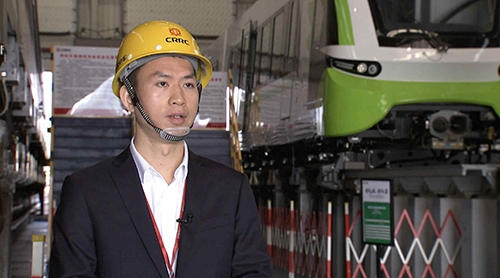By Cui Hui’ao, Huang Yi, You Siyuan
Compared to traditional metro and light rail systems, magnetic levitation trains, or maglevs, are considered safer and cheaper. But it used to be that only Germany, Japan, and a few other well-industrialized countries had such train technology. One company in central China's Hunan Province called CRRC Zhuzhou Locomotive is celebrating a big breakthrough on a medium-low-speed maglev train.
Back in 2016, China's first medium-low-speed maglev rail line was put into commercial operation in Hunan Province. It uses electromagnetic suspension guidance and linear motor traction technology. Until now, the trains have carried millions of passengers with no incidents.

China's CRRC Zhuzhou Locomotive is celebrating a big breakthrough on a medium-low-speed maglev train. /CGTN Photo
"Germany and Japan started developing maglev trains four decades ago. China started much later. It took the approach of college-enterprise collaboration. Building on previous experience, it took China 20 years to master core maglev mechanization like levitation control, special bogie design and linear driving. It was a lot of tough work," said Deng Jiangming, senior engineer of Maglev System Institute, CRRC.
The cutting-edge maglev technology and development is fueled by China's strategy to promote high-end manufacturing. That train brings China into the ranks of only a handful of countries that can offer world-class medium-low maglev train technology. But the innovation did not end there.

Dr. Deng Jiangming, senior engineer of Maglev System Institute, CRRC /CGTN Photo
This June, a new generation of maglev trains rolled off the production line. They can run up to 160 kilometers per hour, compared with the first generation's top speed of 100.
Deng said the 2.0 maglev train features a 60 percent increase in traction ability and can carry up to 500 passengers. It provides a new option for the market.
Not only is the 2.0 model faster and stronger, compared to its predecessor, which could only operate within a city, it also moves people between central and satellite cities.
Developments to bring out the best of the domestically designed maglev are still ongoing. The company will develop the prototype of a middle-to-low-speed maglev train which will run at a speed of 200 km/h.
In addition, the company will launch a production line with intelligent manufacturing systems next year. "In the future, robots and robotic arms will get most of the work done at production sites. Trains will be completely unmanned. And we are developing a remote control system that ensures safe operation of the trains," said Deng.
Deng said China is forming its own complete industrial chain of middle-to-low-speed maglev trains. He hopes that in the near future it can set a Chinese maglev standard for the rest of the world to emulate.